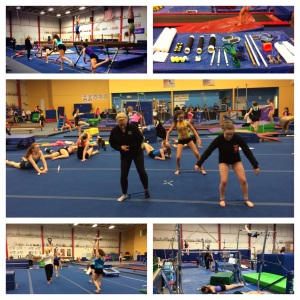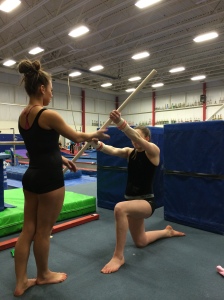This week I wanted to share an injury situation that recently came up with one of our gymnasts, and touch on some areas I’ve been thinking on the last few months. I really think people in gymnastics would benefit from hearing and thinking about her story. Don’t worry, both her mother and her said it was okay if I posted about it. After discussing it with them they agreed it was important information to share for other gymnasts and coaches out there. The situation is certainly a bummer as I will talk about, but I think there are some larger concepts behind the story that a lot of coaches/gymnasts/parents/medical professionals could learn from to help other gymnasts out there. I had another post lined up for this week but I thought this one was more important to get out. So, I did a little late night 2 am writing session (thank you Dunkin Donuts) and put this together for and early post this week.
Category: Spine
The concept of the core is something that pops up in almost every gymnastics discussion, due to its role in skill work. In every gym you step foot into you’re bound to hear someone talking about tight cores, squeezing the belly hollow, and “doing abs” for conditioning. Every current or former gymnast reading this can vividly relate to the amazing but awful feeling of the seal stretch after what felt like 2 hours of hollow rocks. Granted this type of strength is really important for gymnastics, there is so much more information to the core relating to injury prevention and skill performance. In the last 6 months I have read an incredible amount of literature and books discussing what the core does for our every day lives, sports, and ways to train for safe movement. I have spent a lot of time processing the information and brewing up ideas about these ideas may change the way some people think about core training in gymnastics. Last week’s article about how a gymnast’s core problem can look like hamstring tightness got the most attention out of anything I have ever published. I wanted to follow that up and write about where my brain has been the last few months for core training in gymnasts. I also wanted to share some of the ways I have put these ideas into our pre-hab/strength programming for coaches and gymnasts to try out.
Something really interesting happened to me the other night at the gym during practice, and I wanted to share the story. One of my level 8’s told me that she has “really tight hamstrings” and that for some reason no matter how much she stretches her splits or pikes they never get better. I know this gymnast personally, and I know that she is one of the most flexible/hyper mobile girls on our team. So naturally I was thinking there had to be more to this. I decided to take a few minutes to break it down and figure out if it was really a hamstring mobility problem based on a lot of the PT information I’ve been reading/listening to lately. What ended up looking light tight hamstrings and a restricted pike stretch was really a core control /stability problem, and by doing some corrective work I was able to fix what looked like tight hamstrings in about 5 minutes. It all started out with her showing me a pike stretch, where she said she felt a lot of pulling in the back of her legs because of her hamstrings and she could not reach her hands to the floor.
Gymnastics is a sport that requires athletes to perform many types of drills, skills, and movements with the arms overhead. If you were to step back and look at how much time a gymnast spends during practice with their arms in some sort of overhead position, you might be amazed. The forces that gymnastics puts on some of these overhead movements is also pretty wild. Gymnasts and coaches have to remember that the shoulder joints aren’t designed to be weight-bearing joints like some of the lower body areas like the hips, knees, and ankles. Gymnastics is unique in the sense that it requires the upper extremity chain (thoracic spine, shoulder blades, shoulder, elbow, wrist, hand) to weight bear in a variety of different ways. When the forces of gymnastics training are greater than the upper extremity chain’s ability to control, stabilize, and handle these forces it starts to set the stage for some major head aches for both coaches and gymnasts. This scenario is often when dysfunctional movement, compensation, overuse injury, a lack of skill progress, and pain start to become issues.


































































